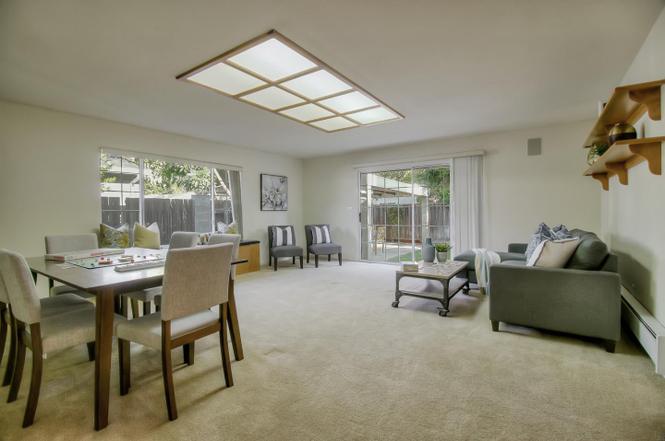
When you stage your home, you shouldn’t just settle for making your home seem livable. You should make it seem like prospective buyers already live there. You’ve staged your home well when you’ve allowed a prospective buyer, with natural ease, imagine themselves living a relaxed, sophisticated, comfortable life in your house. Experts will tell you that you only have 10 seconds to capture a potential buyer’s interest, and the surest way to do that is to make the prospective buyer fall in love—not with your house or its furnishings, but with the lifestyle the house portrays.
To that end, home stagers have begun to construct “lifestyle vignettes.” Stagers and homeowners go beyond merely decorating a room and create “scenes” in specific rooms. As an example, when staging a game room in a loft, put up pieces of stimulating vehicle-themed artwork, made the room pop with vivid green and red upholstery and throw pillows, and set out playing cards and an hourglass on the coffee table as though an actual game was in progress. This “scene-setting” approach can be effective in showing (not merely telling) prospective buyers that the lifestyle they crave is possible in your home—right now.
There are several ways that you, as a homeowner looking to sell, can arrange your home’s furnishings to portray a certain lifestyle:
- Do your research. What is your neighborhood famous for? If you live in a town famous for its live music scene, you could incorporate musical themes into the vignettes you stage. In neighborhoods with a rich cultural history, opportunities abound for color, texture, and cultural richness in the vignettes you create. Taking cues from your neighborhood accentuates the attractiveness and trendiness of both your home and the neighborhood it sits in and creates a memorable link between the two in the buyer’s mind.
- Sweat the details. Frequently, it’s the little touches that count. When building a coffee table vignette, do more than just set out a bowl of fruit or fresh flowers. Pay attention to layers and textures, materials and colors. Use objects which will evoke emotions and memories in the minds of prospective buyers, and make it seem like the house is already a part of their lives.
- Mind your surroundings. Good home staging draws attention to a home’s key feature or attractive asset. Start with your home’s best quality and built outward, constructing a vignette out of it. If your house has a patio with a view of the ocean, for example, then set out books, wineglasses, buckets of seashells, binoculars, and other such accoutrements. Bookworms, wine enthusiasts, beachcombers, and birdwatchers alike will see the potential of the house, and you will have created a vignette that attracts a broad spectrum of potential buyers.
- Keep it simple. Nothing says that your staging has to be grandiose, or even elaborate. A simple Recamier day bed, some throw pillows, a lamp, a wineglass on a small table, and a fireplace are enough to set a scene and stimulate the prospective buyer’s imagination.
- Get a second opinion. One of the worst mistakes homeowners can make is to avoid getting someone else’s input on their vignettes. As a homeowner, your opinion of your home is subjective. You should call in a trustworthy and objective friend—a home stager or a realtor—and let them see your vignettes with fresh eyes, so you’ll know if they’re working or not.
- Keep your eye on the ball. As you create lifestyle vignettes in your home, take care not to make them too subjective. A vast majority of prospective buyers should be able to envision themselves living in the home, not just a select few. Vignettes should not be so specific that they lack universal appeal. One person’s relaxing patio paradise might be another’s cluttered, poorly-decorated mess.
